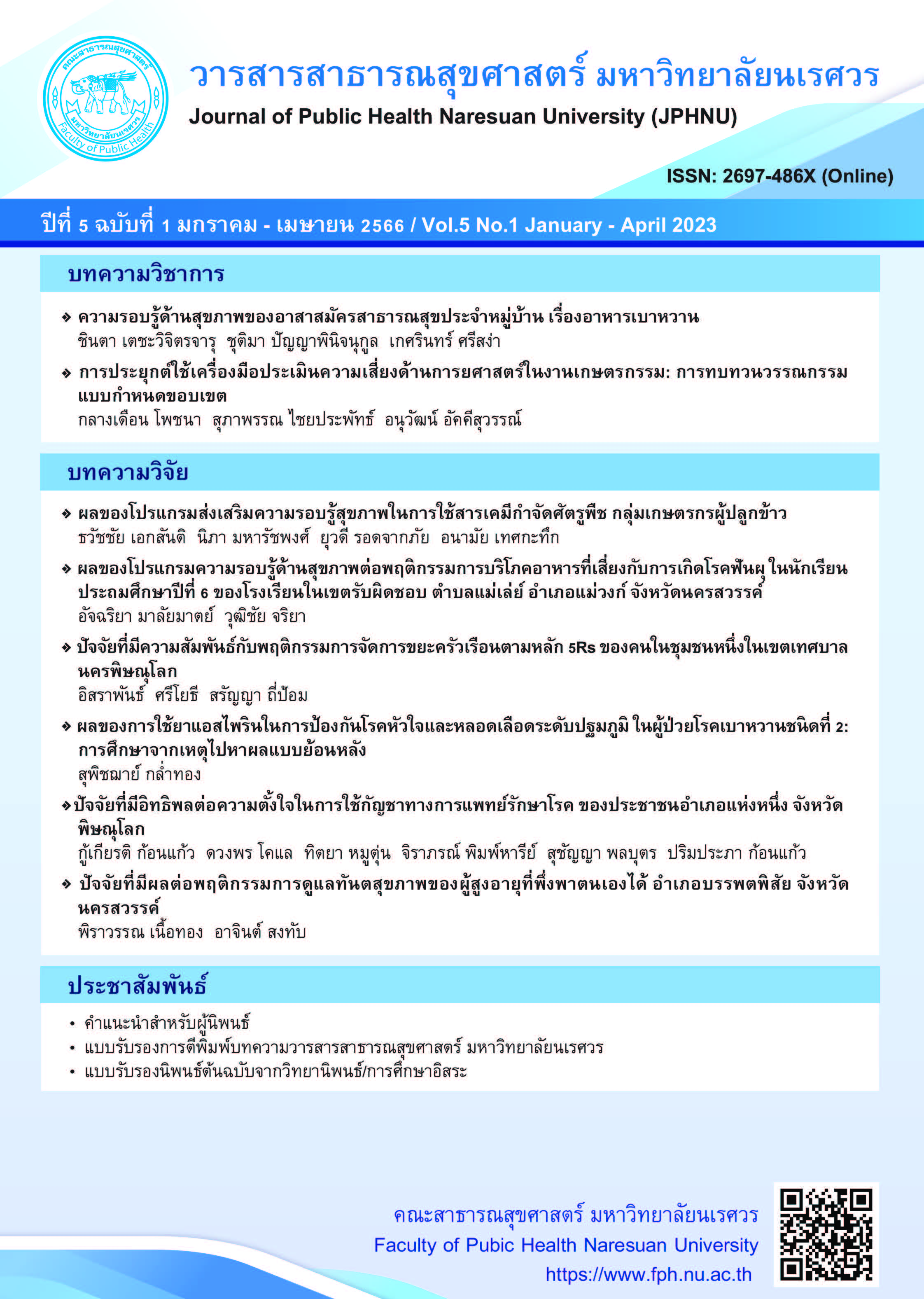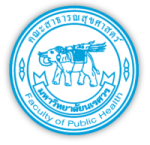Factors influencing the intention to use medical cannabis among people in a district, Phitsanulok Province
Keywords:
Medical cannabis, Perception, Belief, Intention, AttitudeAbstract
The purposes of this cross-sectional research were to examine knowledge, perception, belief, attitude, subjective norm, and intention to use medical cannabis (MC) for illness treatment, as well as the factors influencing this intention to use medical cannabis in a district, in Phitsanulok province. Data were collected using a questionnaire among 251 participants via applied a multistage random sampling method. Data were analyzed by descriptive statistics and the stepwise method of multiple regression analysis was also applied.
The results showed that most participants knew the use of MC at a moderate level (63.7%). The perception of the use of MC was at a moderate level (87.6%). The belief in the use of MC was at a moderate level (55.0%). The attitude toward the use of medical cannabis was at a high level (59.4%). The subjective norm was at a low level (72.5%). The intention to use MC was at a high level (64.5%). There were three factors influencing the intention to use medicinal cannabis: attitude, belief, and subject norm. These factors could influence the intention to use MC (R2 = 0.586) with a statistical significance value of 0.05. The findings suggested that Tambon Health Promoting Hospitals or primary care units should promote the subject norm for those who have an effect on the use of MC, for instance, family members, neighbors, and health workers, for assisting in stimulation or explanation the pros and cons of the use of MC. Additionally, the correct attitude and beliefs on the use of MC should be promoted among people having the intention to use MC.
References
Aekplakorn, W., Puckcharern, H., & Satheannoppakao, W. (2021). The 6th health survey report among Thai people by body check in B.E. 2562-2563. Bangkok: Faculty of Medicine Ramathibodi Hospital, Mahidol University. (in Thai)
Ajzen, I. (1991). The Theory of Planned Behavior. Organizational Behavior and Human Decision Processes, 50(2), 179-211.
Akksilp, S. (2019). Health policy on medical marijuana use. Journal of The Department of Medical Services, 44(1), 10-12. (in Thai)
Ben, N. M., Perelman, M., & Ben, N. G. (2016). Factors related to the intention of Israelis to use complementary and alternative medicine. Journal of Holistic Nursing, 34(4), 361-368.
Best, J. (1977). Research in education. (3rd ed.). Englewood cliffs, New Jersey: Prentice-Hall. Bloom, B. S. (1967). Evaluation of learning in secondary school. New York: Mcgraw-Hill.
Chokevivat, V. (2019). Cannabis: Is it really a magic medicine?. Journal of Thai Traditional & Alternative Medicine, 17(2), 324-340. (in Thai)
Feepakphao, N., Khamyodmoung, K., Chunton, C., Sichalk, P., Kantakasigam, P., Tantham, S. et al., (2020). Predicting intention factors of using marijuana in the treatment process of students community health students, School of Medicine, University of Phayao. Nursing Public Health and Education Journal, 21(1), 91-104. (in Thai)
Findley, P. A., Edelstein, O. E., Pruginin, I., Reznik, A., Milano, N., & Isralowitz, R. (2021). Attitudes and beliefs about medical cannabis among social work students: Cross-national comparison. Complementary Therapies in Medicine, 58, 102716. doi: 10.1016/j.ctim.2021.102716
Jianbunjongkit, T. (2018). Decriminalization of drugs: A case of medical uses of cannabis. Nitipat Nida Journal, 7(2), 51-66. (in Thai)
Lapoint, J. M. (2015). Cannabinoids. In R. S. Hoffmann, M. A. Howland, N. A. Lewin, L. S. Nelson, L. R. Goldfrank, (Eds.). Goldfrank’s toxicologic emergencies. (10th ed.). (pp.1042-1053). New York: McGraw-Hill Education.
Manning, L., & Bouchard, L. (2021). Medical cannabis use: Exploring the perceptions and experiences of older adults with chronic conditions.Clinical Gerontologist, 44(1), 32-41.
McLeod, S. (2018). Visual Perception Theory. Retrieved October 23, 2021, from https://www.simplypsychology.org/perceptiontheories.Html.
Narcotics Act B. E. 2522. (1979, April 27). Thai Government Gazette, Vol. 96, Part 63. (in Thai)
Narcotics Act (No. 7) B. E. 2562. (2019, February 17). Thai Government Gazette, Vol. 136, Part 19A. (in Thai)
Rakpanich, W., Panomai, N., & Laohasiriwong, W. (2020). Determinants of intention to use medical cannabis among people in the Northeast of Thailand. Indian Journal of Public Health Research and Development, 11(7),1548-1554.
Srisubut, A., & Thanasitthichai, S. (2019). Marijuana and present medicine. Journal of The Department of Medical Services, 44(6), 5-8. (in Thai)
Viwatpanich, K. (2012). Ethnophathogenicity, ethnophysiology and herbal medicine: A case study of a traditional healer in Phitsanulok Province. Journal of Liberal Art, Ubon Ratchathani University, 8(2), 241-259. (in Thai)
Wayne, W. D. (1995). Biostatistics: A foundation of analysis in the health sciences. (6th ed.). New Jersey: John Wiley & Sons.
Downloads
Published
How to Cite
Issue
Section
License
Copyright (c) 2023 Journal of Public Health Naresuan University

This work is licensed under a Creative Commons Attribution-NonCommercial-NoDerivatives 4.0 International License.
The published article is copyrighted by the Journal of Public Health and Health Sciences Research.
The statements that appear in each article in this academic and research journal are the personal opinions of each author and are not related to Naresuan University and other faculty members in the university. Responsibilities regarding each article are the responsibility of each author.






